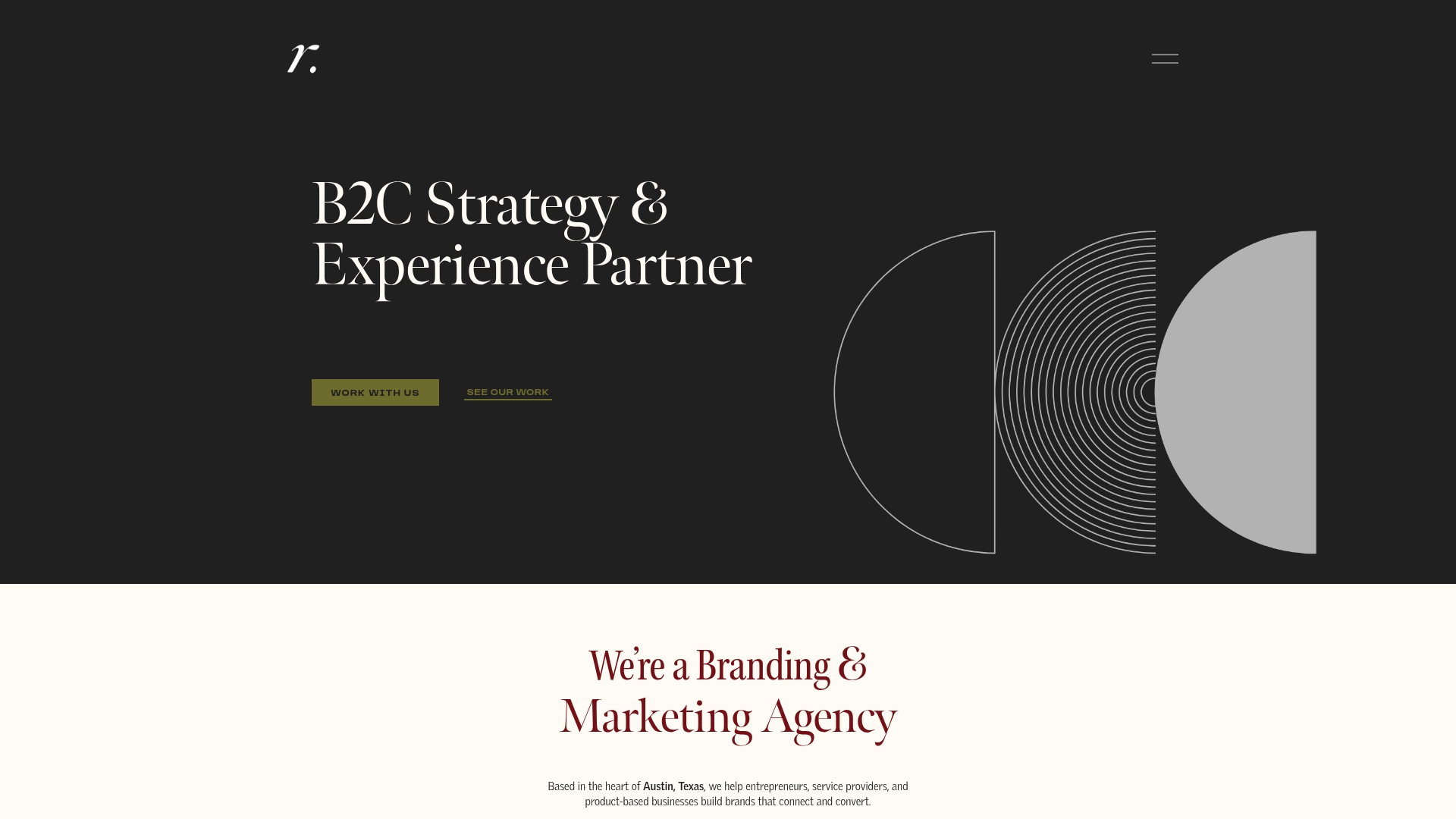Brand Identity Visual Identity: Shaping Perception and Growth

Explore advertising campaign strategy and learn its significance, components, and how it shapes successful marketing efforts.

Every brand wants people to notice their ads, remember their name, and choose their products. But just throwing a message out there does not stick. Research shows tailored advertising campaigns can boost brand engagement by over 30 percent compared to generic efforts. So it might sound strange, but the secret to powerful promotion is not about working harder or shouting louder. It is about having a smart, focused campaign strategy that transforms scattered messages into a mission with a purpose.
| Takeaway | Explanation |
|---|---|
| Identify Your Target Audience | Define who your campaign is aimed at to ensure effective messaging. |
| Set Clear Communication Objectives | Establish specific goals like brand awareness or sales generation for better focus. |
| Develop a Compelling Message | Craft narratives that resonate with audience needs to drive engagement. |
| Utilize Strategic Models | Implement models like Push or Pull strategies for effective marketing execution. |
| Monitor and Adapt Continuously | Adjust your strategy based on audience feedback and market changes for maximum impact. |
An advertising campaign strategy represents a comprehensive blueprint that guides how businesses communicate their value proposition to potential customers through targeted marketing efforts. At its core, this strategy serves as a structured approach to planning, executing, and measuring promotional activities designed to achieve specific business objectives.
Advertising campaign strategy encompasses several critical elements that transform disconnected marketing activities into a cohesive, purposeful communication plan. These components work together to create a unified message that resonates with the intended audience.
Strategic Elements Include:
Advertising campaign strategy goes beyond simple promotional tactics. According to Marketing Dictionary, it represents a deliberate statement prepared by advertisers that outlines specific factors including competitive landscape, target market, and core message argument. The strategy serves as a roadmap that transforms abstract business goals into concrete communication plans.
The fundamental purpose of an advertising campaign strategy is to create a structured approach that maximizes marketing resources while minimizing waste. By establishing clear guidelines and expectations, businesses can ensure their promotional efforts are intentional, measurable, and aligned with broader organizational objectives.
Understanding an advertising campaign strategy requires recognizing it as more than just a series of advertisements. It is a holistic approach that integrates market research, creative development, media selection, and performance tracking into a unified system designed to achieve specific business outcomes.
Brands operate in a complex marketplace where simply offering a good product is no longer sufficient. An effective advertising campaign strategy transforms how businesses communicate, connect, and compete in increasingly crowded markets. By developing a strategic approach to promotion, brands can cut through noise and establish meaningful connections with their target audience.
Advertising campaign strategy serves as a critical mechanism for brand visibility. Marketing research indicates that traditional and digital media channels provide powerful platforms for brands to communicate their unique value proposition. Strategic advertising helps brands:
Beyond mere visibility, advertising campaign strategy enables brands to craft precise, targeted messages that resonate with specific audience segments. By understanding audience psychology and preferences, brands can develop communication approaches that transform passive viewers into engaged customers.
Understanding audience needs allows brands to develop nuanced messaging that speaks directly to customer motivations. This targeted approach increases the likelihood of converting marketing efforts into tangible business outcomes. Learn more about our approach to strategic brand communication.
A well-executed advertising campaign strategy does more than promote products. It builds brand identity, establishes emotional connections, and creates lasting impressions that extend far beyond individual marketing initiatives. By treating advertising as a strategic tool rather than a tactical expense, brands can unlock powerful opportunities for growth and customer loyalty.
Advertising campaign strategy operates through a sophisticated framework that transforms business objectives into targeted communication plans. This systematic approach integrates multiple conceptual models to create compelling, results-driven promotional efforts that resonate with specific audience segments.
To clarify the differences between major strategic models in advertising campaign strategy, the following table compares Push Strategy, Pull Strategy, and Integrated Marketing Communication (IMC) across core factors.
| Model | Approach | Objective | Key Feature |
|---|---|---|---|
| Push Strategy | Directs marketing efforts toward intermediaries or consumers | Drive product toward end users | Active promotion to create demand |
| Pull Strategy | Focuses on stimulating consumer demand | Encourage consumers to seek out the brand | Advertising creates brand desire |
| Integrated Marketing Communication (IMC) | Ensures unified communication across all marketing channels | Deliver consistent brand message | Aligns messaging on multiple platforms |
Marketing campaign planning reveals several core conceptual models that guide strategic development. These models provide structured approaches to understanding how brands can effectively communicate their value proposition.

Key Strategic Models Include:
Successful advertising campaign strategies recognize that effective communication transcends simple message delivery. They leverage deep understanding of psychological principles that influence consumer behavior and decision making. Psychological foundations involve:
Learn more about our strategic marketing approach that goes beyond traditional advertising models.
The practical implementation of an advertising campaign strategy requires a dynamic, adaptive framework. Brands must continuously monitor audience responses, adjust messaging, and refine targeting to maintain relevance in a rapidly evolving marketplace. By treating advertising as an intelligent, responsive system rather than a static communication tool, organizations can create more meaningful and impactful promotional experiences.
This table summarizes key psychological and behavioral foundations leveraged in advertising campaign strategies to drive consumer engagement.
| Principle | Description | Impact on Advertising |
|---|---|---|
| Consumer Motivation Triggers | Identifies underlying reasons customers act | Designs messaging aligned to desires |
| Cognitive Message Processing | Examines how people perceive and interpret marketing messages | Refines clarity and retention |
| Emotional Response Patterns | Studies reactions to campaigns on an emotional level | Fosters deeper engagement and loyalty |

Crafting a successful advertising campaign strategy requires careful orchestration of multiple interconnected components. These elements function like precise machinery, working together to transform business objectives into compelling communication that resonates with target audiences.
According to Small Business Development Center research, the strategic foundation begins with precise audience definition. Brands must develop a comprehensive understanding of their target demographic, moving beyond basic demographics to explore psychological profiles, behavioral patterns, and motivation triggers.
Critical Planning Components Include:
Effective advertising campaign strategies prioritize message clarity and credibility. This means developing communication that is not just attention grabbing, but also authentic and aligned with brand values. Successful strategies create a narrative that transforms passive information consumption into emotional engagement.
Key Messaging Considerations:
Explore our comprehensive approach to strategic brand communication that goes beyond traditional marketing frameworks.
Ultimately, a successful advertising campaign strategy is a dynamic ecosystem. It requires continuous monitoring, rapid adaptation, and a willingness to evolve based on audience feedback and changing market conditions. By treating the strategy as a living, breathing system rather than a static document, brands can create marketing approaches that are not just effective, but truly transformative.
Successful advertising campaigns demonstrate how strategic communication can transform brand perception, drive consumer engagement, and create lasting market impact. These real-world examples illustrate the power of innovative advertising campaign strategies that go beyond traditional promotional approaches.
According to St. Bonaventure University Online, the Coca-Cola “Share a Coke” campaign represents a masterclass in personalized marketing. By replacing the brand logo with individual names on bottles, Coca-Cola achieved remarkable results:
Campaign Breakthrough Elements:
Effective advertising campaigns transcend product promotion by crafting compelling narratives that resonate with audience values. Successful storytelling strategies involve:
Discover our approach to strategic brand storytelling that transforms marketing into meaningful communication.
These examples reveal a critical insight: exceptional advertising campaigns are not about selling products but about creating experiences that forge deep connections with audiences. By understanding consumer psychology, leveraging creative storytelling, and aligning brand messaging with genuine human emotions, organizations can develop advertising strategies that do more than capture attention—they inspire action, build loyalty, and create lasting brand memories.
Struggling to move beyond scattered ads and uncertain outcomes? If you want a reliable way to transform brand vision into consistent business growth, you need more than just basic tactics. The article explained how a real advertising campaign strategy requires unified messaging, clear objectives, and precise audience targeting. Yet many entrepreneurs are still stuck hoping for results while wasting budget on campaigns that lack connection and long-term value. At Reasonate Studio, we understand how overwhelming this can feel, especially when every step in marketing seems disconnected from your actual business goals. Our unique approach starts with The Aligned Impact Model™, a proven system built for founders who want clarity, direction, and measurable results from their marketing.

Stop guessing and start leading your brand with focus. Discover how our mix of strategy, storytelling, and streamlined systems turns uncertainty into actionable growth. Visit Reasonate Studio to see how we guide small businesses from scattershot marketing to purposeful campaigns, or learn about our approach to brand strategy to gain confidence in every marketing investment. If you are ready to trade surface-level promotion for a system that scales with you, take your next step with a free discovery call today.
An advertising campaign strategy is a comprehensive blueprint that guides how businesses communicate their value proposition to potential customers through targeted marketing efforts, focusing on planning, executing, and measuring promotional activities to achieve specific objectives.
Identifying a target audience is crucial because it allows brands to tailor their message and marketing efforts to the specific needs, preferences, and motivations of potential customers, increasing engagement and improving the chances of conversions.
Effective messaging creates clear, compelling narratives that resonate with the audience, ensuring that the communication is not only attention-grabbing but also authentic and aligned with the brand’s values, fostering emotional connections with consumers.
Common strategic models include Push Strategy, which drives products toward consumers, Pull Strategy, which creates demand that pulls products through marketing channels, and Integrated Marketing Communication (IMC), which ensures consistent messaging across various platforms.